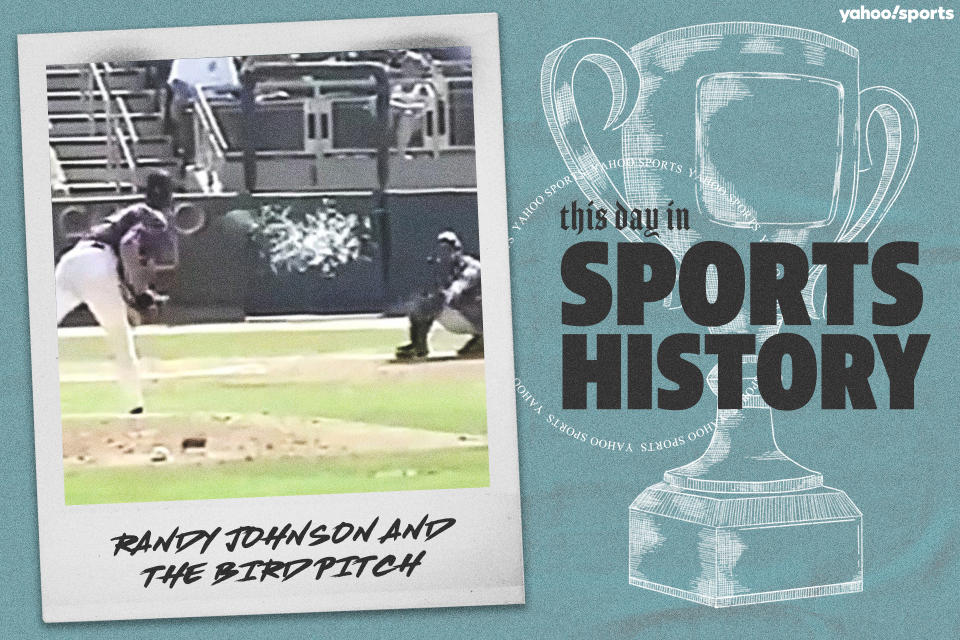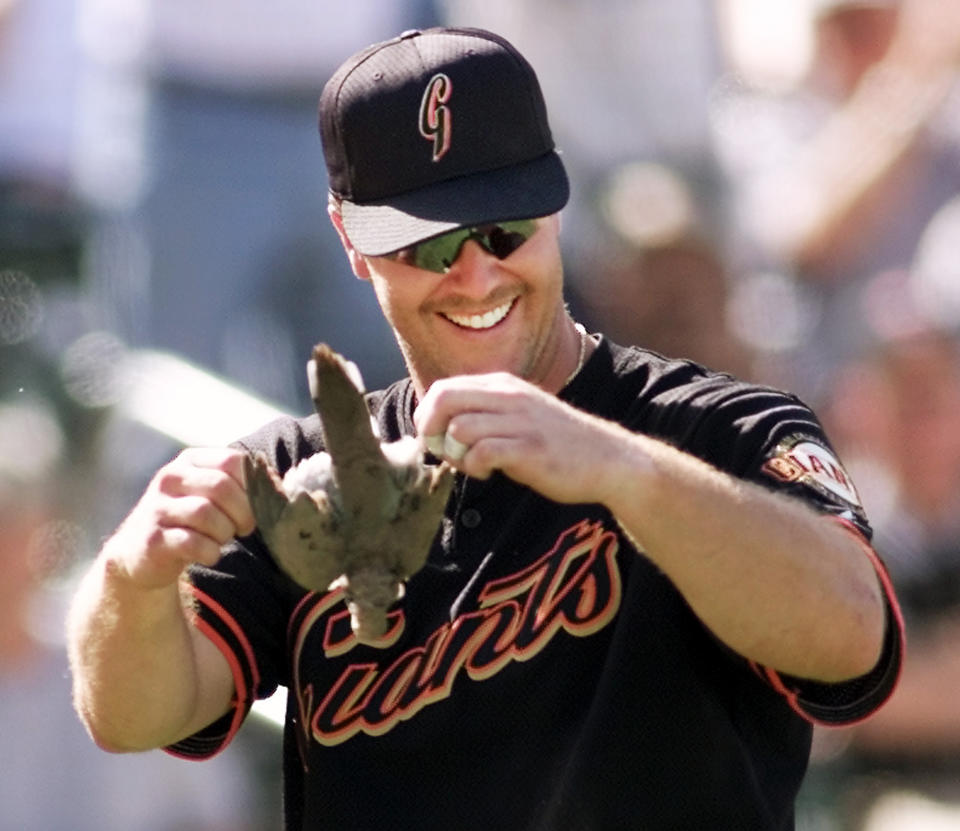This Day in Sports History: Randy Johnson and the bird pitch
Yahoo Sports is digging into the archives, taking a look back at the moments that shaped sports.
In history, March 24 isn’t very remarkable. In 1944, the real life WWII escape that inspired the movie “The Great Escape” began. In 1958, Elvis Presley was drafted into the army. The famous Exxon Valdez oil spill happened in 1989. Harry Houdini, Clyde Barrow, and Peyton Manning were all born. All notable, but maybe not worth marking March 24 on your calendar.
Thankfully, in 2001, a bird changed that forever.
The date?
March 24, 2001
The star?
Randy Johnson. In March 2001, 37-year-old Randy Johnson was about to embark on yet another Cy Young-winning season, his third of four straight. Johnson had blossomed once he hit 30, an age that nowadays gets a pitcher a sideways look when he asks for a contract extension. Johnson didn’t get his first Cy Young vote until he was 29, and he didn’t win his first award until he was 31.
By 37, the Big Unit had become the most dominant starting pitcher in baseball, pitching for the National League’s youngest team. After nearly a decade with the Seattle Mariners and a short stint with the Houston Astros, Johnson joined the Arizona Diamondbacks in 1999, the year after they were founded.
Maybe it was the change in scenery, or the dry, desert air of Phoenix, but once Johnson arrived in Arizona, he went on a four-year tear. He picked up the ball for the Diamondbacks in 1999, and by the time he put it down at the end of the 2002 season, he’d amassed four straight Cy Young awards, four straight All-Star appearances, and the triple crown in 2002. He led all of MLB in ERA all four years, and was the strikeout leader for three of them.

Johnson was right in the middle of all that in 2001, which was a big year for him. He ended the season with league-leading stats, his fourth of five career Cy Youngs, and he’d also get his only World Series ring (and World Series MVP award) while leading the still-newborn Diamondbacks franchise to its first (and still only) championship.
It all started with a bird. A bird that sacrificed its life so that Johnson’s legacy could reach mythic proportions.
The event?
History’s deadliest no-pitch.
The season hadn’t even started yet. The Diamondbacks were playing the San Francisco Giants in a spring training game, just as meaningless as the last one. The sun was bright, the grass was green, and one bird had no idea that it was about to flap its wings for the very last time.
Johnson was facing Calvin Murray in the seventh inning. He reared back, released the pitch, and waited for the sound of a swooshing bat and the ball hitting the glove. That is definitely not what he heard.
The missile spun from Johnson’s hand connected with a dove that happened to be flying between the mound and home plate at that exact moment. It combusted in a puff of feathers, dead on contact. There was no mistaking what had happened, and the crowd knew instantly. They groaned in unison.
From home plate, Murray saw nothing but a flurry of feathers.
"It exploded, feathers and everything, just 'poof!'" Murray told ESPN. "There were nothing but feathers laying on home plate. I never saw the ball, nothing but feathers."
The umpire ruled it a no-pitch, effectively wiping out any official record that Johnson threw a pitch that killed a bird. Giants second baseman Jeff Kent personally carried the dead dove away.

And because he’s Randy Johnson, he struck out eight batters in that meaningless but deadly spring training game. The bird didn’t count, because that was a completely different kind of strikeout.
The impact?
Looking back almost 20 years later, the impact is in the event happening at all. There have been other baseball vs. bird events in the annals of baseball history (Dave Winfield hitting a seagull while warming up in 1983 is notable), but nothing that kicked up such a cloud of dust (or feathers). There are tales of pitchers getting distracted and chasing fire engines, of batters chugging beer at home plate, and managers attacking furry mascots. But not until March 24, 2001, did we have a real story about a professional pitcher killing a bird with a pitch. It’s comforting that even with baseball’s 150-plus year history, there can still be new things under the sun.
Johnson didn’t need to kill a bird to become a legend. At 37, in the midst of one of baseball’s most dominant stretches, his road to the Hall of Fame was already mostly paved. But killing a bird made him mythical. With his lanky frame and lithe limbs that could whip balls at incredible speeds, there’s almost no pitcher more suited to obliterating a bird in mid-flight than Johnson. Johnson’s devastating fastball gave him an edge in pitching, but also apparently in bird killing. In light of that, it might be more amazing that Johnson didn’t become the No. 1 enemy of the bird community.
More from Yahoo Sports:


